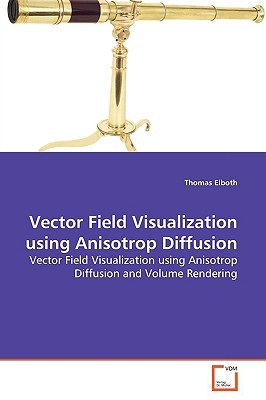
- We will send in 10–14 business days.
- Author: Thomas Elboth
- Publisher: VDM Verlag
- ISBN-10: 3639155548
- ISBN-13: 9783639155549
- Format: 15.2 x 22.9 x 0.7 cm, minkšti viršeliai
- Language: English
- SAVE -10% with code: EXTRA
Vector Field Visualization using Anisotrop Diffusion (e-book) (used book) | bookbook.eu
Reviews
Description
Vector fields are normally the result of computer simulations, or measurements, done in a number of scientific fields. This can be in fluid dynamics, meteorology, medicine, climate modeling and oil exploration, just to mention a few. To be able to understand and interpret these data, we normally need to transform them into images. A good image will hopefully also help us in obtaining new insight into the underlying physics. To display an image of a 2D vector fields is fairly simple. However, meaningful images of 3D fields are much more challenging to produce, as cluttering and occlusion often obscure important details. In this work we present a techniques that solve some of these issues, and produce high quality images and animations of 2D and 3D vector fields. This is done by solving a partial differential equation (PDE) for anisotropic diffusion, and displaying the results in modern Volume Rendering software.
EXTRA 10 % discount with code: EXTRA
The promotion ends in 23d.19:13:39
The discount code is valid when purchasing from 10 €. Discounts do not stack.
- Author: Thomas Elboth
- Publisher: VDM Verlag
- ISBN-10: 3639155548
- ISBN-13: 9783639155549
- Format: 15.2 x 22.9 x 0.7 cm, minkšti viršeliai
- Language: English English
Vector fields are normally the result of computer simulations, or measurements, done in a number of scientific fields. This can be in fluid dynamics, meteorology, medicine, climate modeling and oil exploration, just to mention a few. To be able to understand and interpret these data, we normally need to transform them into images. A good image will hopefully also help us in obtaining new insight into the underlying physics. To display an image of a 2D vector fields is fairly simple. However, meaningful images of 3D fields are much more challenging to produce, as cluttering and occlusion often obscure important details. In this work we present a techniques that solve some of these issues, and produce high quality images and animations of 2D and 3D vector fields. This is done by solving a partial differential equation (PDE) for anisotropic diffusion, and displaying the results in modern Volume Rendering software.


Reviews